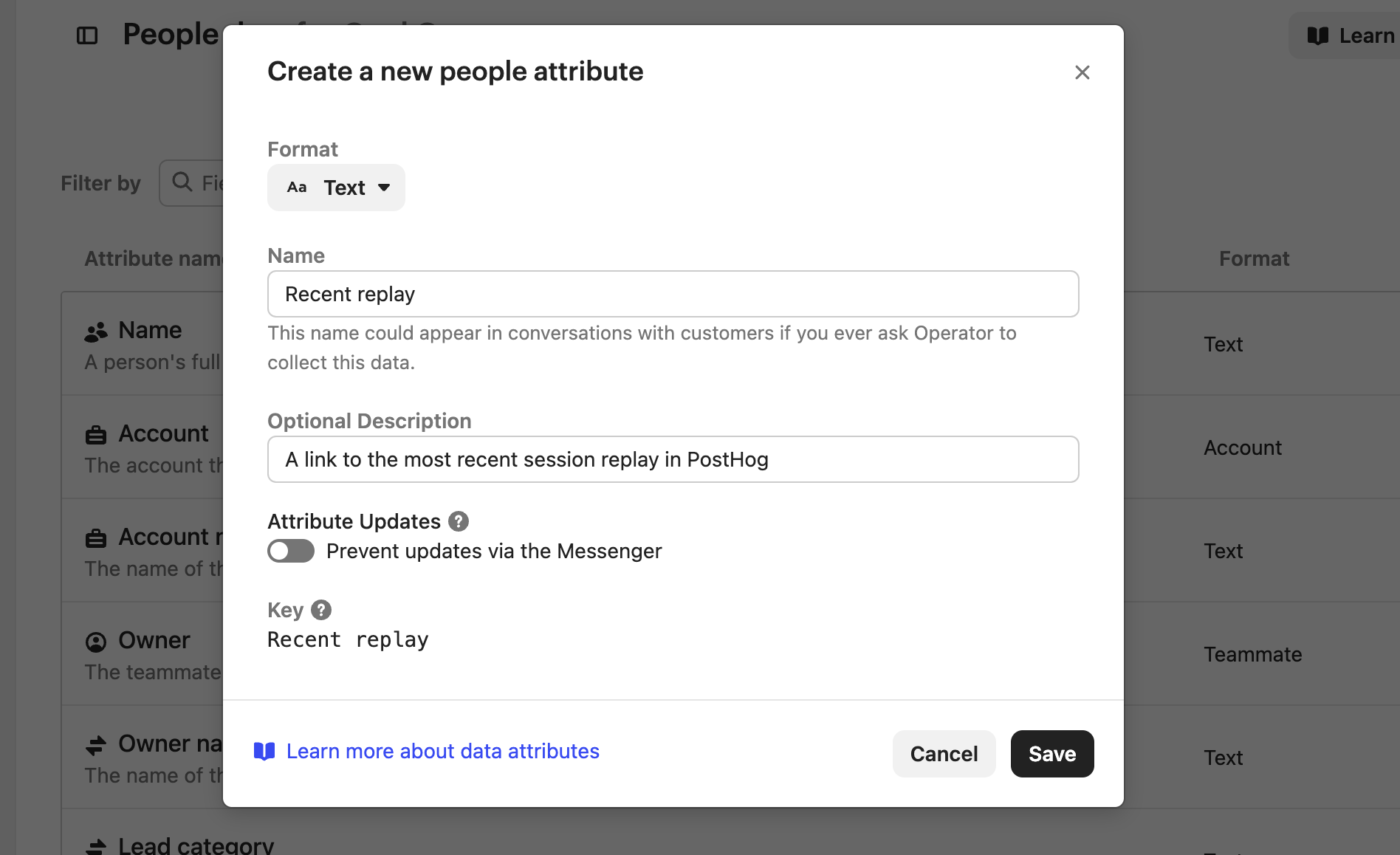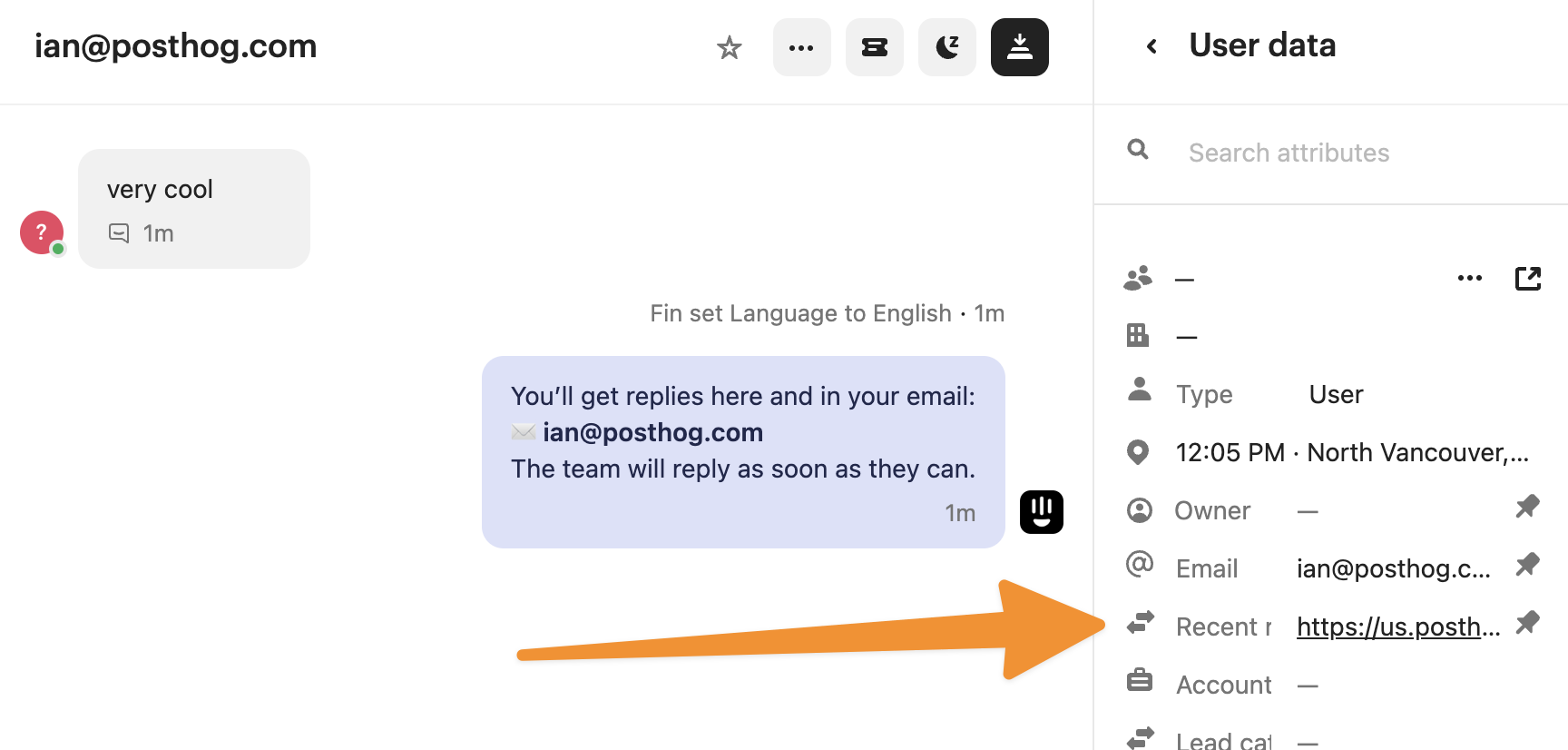How to add session replays to Intercom
Feb 13, 2024
Session replays are a useful support tool for debugging and recreating issues. The errors, console, and network data along with the rest of PostHog's tools make it a powerful support platform.
To get easy access to session replays in Intercom, you can add them as either user data or events. To show you how to do this, we build a basic Next.js app, add PostHog, add Intercom, and set up the session replay link to show in both places in Intercom.
1. Create a basic Next.js app
First, make sure Node is installed (18.17 or newer), and then create a Next.js app:
Select No for TypeScript, Yes for use app router, and the defaults for every other option. Once created, go into your app/page.js file and add a basic page with a spot for users to enter their email.
Once done, run npm run dev and go http://localhost:3000 to see your app.

2. Add PostHog
To set up session replays, we install PostHog in our app. If you don't have a PostHog instance, you can sign up for free.
Important: Make sure to enable "Record user sessions" in your project settings.
After doing this, install the posthog-js SDK:
Next, create a providers.js file in your app folder. In it, initialize PostHog with your project API key and instance address (from your project settings) and export a provider component. If you use a US Cloud instance, also make sure your ui_host config option is set to https://us.posthog.com.
Once created, you can import PHProvider into your layout.js file and wrap your app in it:
3. Add Intercom
Start by going to your installation settings page. Once there, enable "Install Messenger on your site or web app," choose the "Install with code snippet" tab, and then choose "Single-page apps."
To install Intercom in the app/page.js file, we:
- Set
APP_IDas a variable, but you can use the pre-filled URL Intercom provides as well. You can get this value from yourapp.intercom.comURL, it is afterapps/. - Add the first script to a
useEffectto run on load. - Add the
bootcall to thehandleSubmitfunction where the email is available.
Altogether, this looks like this:
Now when you submit an email, Intercom launches with your email connected.

4. Adding session replays to Intercom
The final piece is adding PostHog's session replays to Intercom. Since PostHog automatically captures session replay, all that is left to do is get the link and add it in Intercom. There are two spots we can add it.
Recent session replay as people data attribute
The first way is to add the session replay link is as a people data attribute. To do this, go to the people data settings and click "Create attribute." Name the attribute "Recent replay," click the toggle to enable updates via the Messenger, and click "Save."

Back in your app, add PostHog to your component in app/page.js, call the [get_session_replay_url()](/docs/libraries/js#session-replay) method, and add the link as recent_replay in your boot call like this:
Now, when a user sends a message, you can see a link to their most recent replay in PostHog.

The only downside with this method is that it will only show the most recent replay. You lose the history of replays across sessions you might need for solving older issues.
Adding a session replay event
The second way lets us capture a history of session replays in Intercom. We do this by setting up a basic Intercom event with the session replay link. To do this, use the Intercom trackEvent to capture a session-started event like this:
After running this, when you go to the user in Intercom, you see events connected to them with links to different sessions.

Bonus: Beyond a session replay link, you can add information like:
- User ID (with
posthog.get_distinct_id())- Report event ID
- Admin links
- Target area (like onboarding, dashboard, features) As an example, you can see what we add in GitHub.
Further reading
- How to add session replays to Zendesk
- How to use session replays to improve your support experience
- How to use filters + session replays to understand user friction
